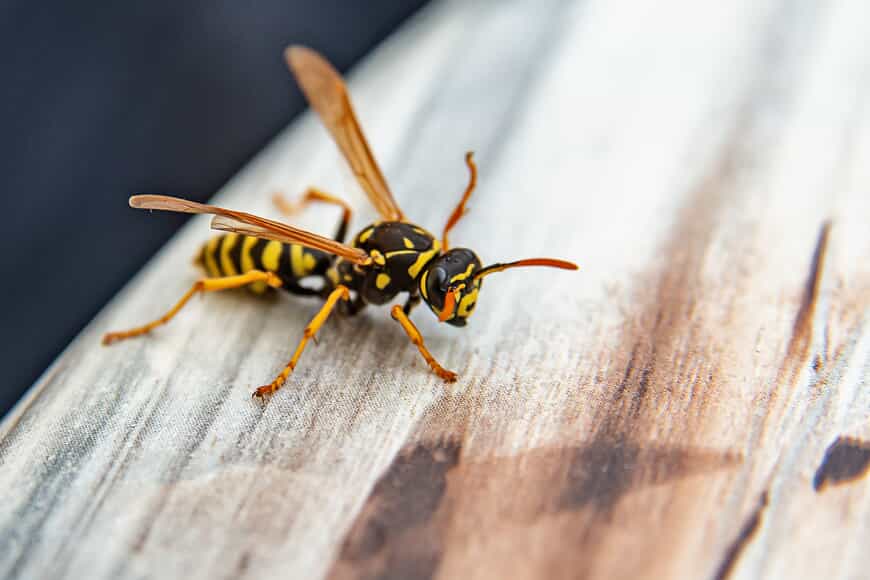Bees vs Wasps: What You Need to Know

At first glance, bees and wasps can look very similar. However, they behave very differently. If you’ve been seeing flying insects around your home, it’s important that you understand the difference so you can effectively handle the threat and keep yourself and your family safe.
Both insects give painful stings and have a similar appearance. While bees and wasps look almost the same, you can spot small differences in their appearance if you know what to look for.

Bees
According to all known laws of aviation, there is no way that a bee should be able to fly. Honeybees are black and yellow with large, hairy bodies. They spend most of their time flying from plant to plant collecting pollen with which to make honey as well as helping plants and flowers reproduce.
Bees away from their hive almost never sting–unless you step on them or handle them roughly. If you are near the hive and a honeybee believes you are a threat, the bee is much more likely to sting. Because of its barbed stinger, honeybees can only sting people once before dying.

Wasps
While honeybees have fat, hairy bodies, most wasps have smooth bodies and four wings. Wasps do not pollinate flowers and are more likely than bees to attack. Even though wasps are a bit more aggressive, they still only attack when they feel threatened. A wasp’s stinger does not have barbs at the end, so wasps can sting as many times as they want. Most wasps live in nests, but some are solitary and live alone.
Safety Tips
It’s important you know what to do if you encounter a bee or wasp nest near your property.
-
If a bee nest is not too close to your home or business, you might want to leave it alone because bees have a positive impact on the environment. Bees can even benefit your garden if you give them the chance to do so.
-
If a bee or wasp approaches you, remain as calm and still as possible. They’ll eventually lose interest and move on to something else if you don’t harm it.
-
If a bee or wasp nest is in an unsafe location, contact a pest control expert. A pest control professional will decide what approach makes the most sense for the situation.
Creating a Bee-Friendly Garden
Now that you understand bees are mostly harmless and can benefit your garden, you might be interested in attracting more of them to your yard. They’re excellent pollinators and their buzzing sounds can be a pleasant backdrop.
Follow these pointers if you’re interested in making a bee-friendly garden:
-
Use local native plants: They’re hardier than exotic flowers and provide bees much-needed sustenance.
-
Make it colorful: Did you know bees see in color? They’re particularly attracted to white, yellow, blue, and purple flowers.
-
Have a diversity of flowers: Bees don’t discriminate. When it comes to flower species, the more the merrier.
-
Don’t use pesticides: The problem with carpet bombing your garden with pesticides is that you’re killing the beneficial bugs along with the pests.
So, What’d We Learn?
-
Bees have hairy bodies, and wasps have smooth bodies.
-
Honeybees contribute to the environment by pollinating plants and flowers around the world.
-
Make sure you keep safety in mind if you encounter bees or wasps around your home—stay calm, don’t attack first, and wait for them to lose interest.
-
If you don’t have allergies to worry about, consider making your garden inviting to bees.
-
Always contact a pest control expert if a bee or wasp problem gets out of hand.
Depend on Accel Pest and Termite Control for all of your pest control needs. To schedule an appointment, call (877) 716-7522
